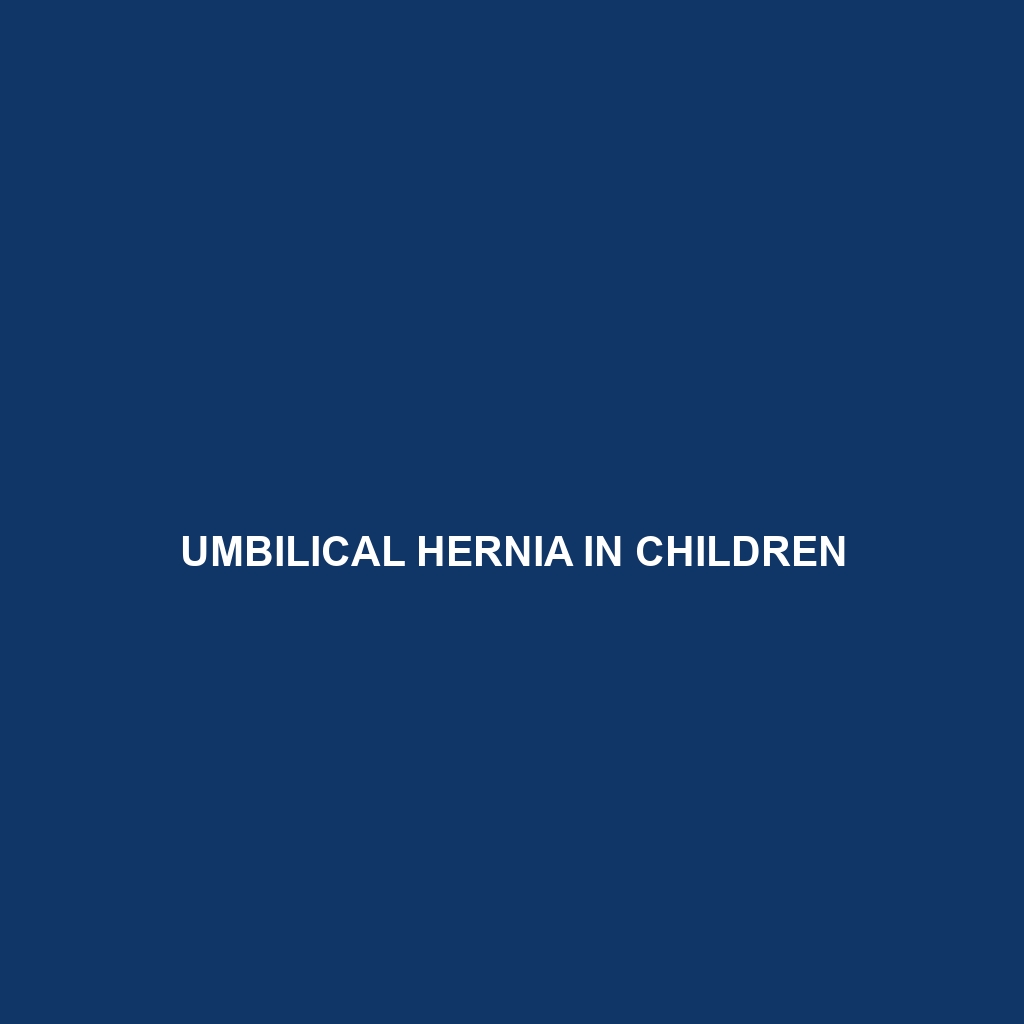Umbilical Hernia in Children:
Definition and Description of Umbilical Hernia in Children:
An umbilical hernia occurs when a portion of the intestine bulges through the abdominal wall or the inguinal canal in the groin. In children, this type of hernia typically appears as a soft swelling or bulge near the belly button. It is more prevalent in infants and children, especially those born preterm, and it can occur when the abdominal muscles do not fully close around the umbilical cord. While often painless, the hernia can become more pronounced when the child cries, coughs, or strains.
Causes of Umbilical Hernia in Children:
Umbilical hernias in children often arise due to incomplete closure of the abdominal muscles after birth. Genetic predispositions and underlying conditions, such as connective tissue disorders, can also contribute. Additionally, external factors like chronic coughing, obesity, and heavy lifting, although less common in young children, may further increase the risk.
Associated Symptoms of Umbilical Hernia in Children:
The primary symptom of an umbilical hernia is the visible bulge in the belly button area. Other symptoms may include tenderness around the bulge, discomfort during physical activity or crying, and in severe cases, nausea or vomiting if the hernia becomes incarcerated or strangulated.
Diagnosis of Umbilical Hernia in Children:
Healthcare professionals typically diagnose an umbilical hernia through a physical examination. The doctor will assess the bulge, its size, and any associated symptoms. In rare cases, imaging tests such as ultrasound may be ordered to confirm the diagnosis and evaluate the contents of the hernia.
Risk Factors for Umbilical Hernia in Children:
Children at higher risk for umbilical hernias include those born prematurely, with low birth weight, or with a family history of hernias. Infants and toddlers are most susceptible, as their abdominal muscles are still developing, making it easier for an umbilical hernia to occur.
Complications of Umbilical Hernia in Children:
If left untreated, umbilical hernias can lead to complications such as incarceration, where the bulging tissue becomes trapped, and strangulation, which occurs when blood flow to the affected tissue is cut off. Both conditions are medical emergencies and can result in serious health risks if not addressed promptly.
Treatment Options for Umbilical Hernia in Children:
Most umbilical hernias in children do not require treatment and often close on their own by age 3 or 4. However, if the hernia is large, painful, or causing complications, surgical intervention may be necessary. The surgery, known as herniorrhaphy, involves pushing the protruding tissue back into the abdomen and repairing the abdominal wall.
When to See a Doctor for Umbilical Hernia in Children:
Parents should seek medical attention if the bulge becomes painful, the child shows signs of discomfort, nausea, vomiting occurs, or if the bulge turns red or dark, indicating potential strangulation. Early intervention is crucial in these situations to prevent complications.
Prevention of Umbilical Hernia in Children:
While there is no sure way to prevent umbilical hernias, parents can help reduce the risk by ensuring that their children maintain a healthy weight, avoiding heavy lifting, and addressing chronic coughs that may put pressure on the abdomen.
Statistics and Prevalence of Umbilical Hernia in Children:
Research indicates that umbilical hernias are common in children, affecting approximately 10% to 20% of infants. The occurrence is more prevalent in premature infants, with rates as high as 30% in this population.
Personal Stories or Case Studies about Umbilical Hernia in Children:
Many parents have shared their experiences with umbilical hernias in children, often highlighting the anxiety and confusion during the diagnosis phase. However, most report relief once they learn that these hernias are typically benign and can resolve spontaneously or are easily treatable when necessary.
Myths and Misconceptions about Umbilical Hernia in Children:
One common myth is that umbilical hernias are caused by lifting the child or excessive crying. In reality, these hernias are often congenital and related to the development of abdominal muscles. Another misconception is that an umbilical hernia will always cause pain; many children live with these hernias without experiencing any discomfort.
Support and Resources for Umbilical Hernia in Children:
For families looking for more information and support, there are various resources available, including the Hernia Foundation and local pediatric health organizations. These groups provide guidance, resources, and community support for those affected by umbilical hernias.
Conclusion about Umbilical Hernia in Children:
Umbilical hernias in children are a common condition that typically resolves without intervention. However, awareness of potential complications and when to seek medical care is essential. Parents should remain informed and communicate with healthcare providers to ensure their child receives proper care.
